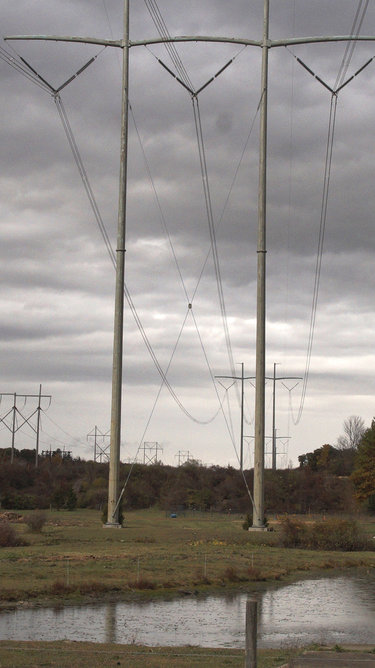Community Choice Aggregation could lead to lower electricity bills for local residents
NEW SCOTLAND — Under a proposed plan from the Municipal Electric and Gas Alliance, a not-for-profit development corporation, town residents could see a drop in their electric bills. The proposal, called Community Choice Aggregation, allows local governments to procure power on behalf of their residents, using residents’ collective buying power to drive down costs while also being able to choose the source of the electricity generation.
“When you pay an electric bill, you pay two discrete things; two main things,” Louise Gava told the New Scotland Town Board on June 12. Gava is a Community Choice Aggregation project leader with the Municipal Electric and Gas Alliance. “One, you pay for delivery, that’s the physical infrastructure; you’re paying for the wires, substations, you’re paying for maintenance, for outages, and that’s National Grid now, and that’s pretty much always going to be National Grid for the foreseeable future.”
The second thing that residents pay for is supply, Gava said, “the physical electrons,” and for most, their “default” supplier is National Grid. What Community Choice Aggregation does, she said, is to find another electricity supplier that could become the new “default” supplier and “an energy source that better fits your needs and interests.”
In New York State, Community Choice Aggregation is still a fairly new concept; so far, only a group of municipalities from Westchester County have banded together to implement a program; counties are unable to enroll in the program as that authority lies with local cities, towns, and villages. Gava said that she is working with a number of municipalities in the state’s Southern Tier on a program as well.
Gava said another important aspect of the program is that local governments can work together, which, in the case of New Scotland would be a necessity because the minimum number of customers needed for aggregation would be about 40,000; the village of Voorheesville is not included in the program, it would have to choose to enroll on its own. However, she added, “Guilderland and Bethlehem are also investigating this opportunity at this same time.”
With those three towns, Gaza said, “You’re around 30,000,” and if the villages of Altamont and Voorheesville were added, “you’re creeping up there.”
Municipalities need not be contiguous to take advantage of the programs, she said, so long as they are in the same electric region, Zone F, which includes all of Fulton, Montgomery, Schenectady, Rensselaer, Washington, Saratoga, and Warren counties; most of Albany, Columbia, Schoharie, and Hamilton counties; and portions of Essex and Otsego counties.
Gaza added that her organization has relationships with municipalities in Saratoga and Warren counties that are also looking to aggregate, which would push the number of needed electricity buyers to over 40,000.
“What is the value?”
New Scotland would have to adopt a local law establishing the Community Choice Aggregation program, giving the town the ability to bargain on behalf of its residents.
From the creation of the state’s first Community Choice Aggregation program to the launch of its pilot program took about 14 months. In Elmira in the state’s Southern Tier, that municipality’s city council adopted a local law authorizing the creation of a Community Choice Aggregation program on July 10, 2017; the aggregation program that the city is a part of is slated to begin next month.
“So what is the value?” Gava asked of Community Choice Aggregation, before answering, “There’s a couple things.”
The first value is better electricity rates for buyers, she said. Through a competitive bid process that is handled by the Municipal Electric and Gas Alliance, companies will compete — which drives down costs — to supply power to residents. Aggregation also creates budget certainty, Gava said, since electricity buyers would have a fixed rate whereas with a normal utility, it’s variable pricing.
Beginning next month, a Community Choice Aggregation program that the organization helped form in the Southern Tier, which includes 16 municipalities of which Elmira is one, will have two years of fully-fixed rates for both traditional and renewable electricity.
So, for a consumer in, say, the town of Augusta looking to purchase electricity from 100-percent renewable sources, it will cost him or her about 5.7 cents per kilowatt hour; traditional (electrical grid) power will cost about 5.1 cents per kilowatt hour. The local electric supplier, the New York State Electric and Gas Corporation, charges about 5.3 cents per kilowatt hour.
For some context, it would take a traditional 60-watt incandescent bulb over 16.5 hours to use one kilowatt hour of energy. In 2017, according to the United States Energy Information Administration, the average annual electricity consumption for a residential utility customer in the United States was about 10,400 kilowatt hours.
“Perhaps, most important, is tailoring [Community Choice Aggregation] to the needs and interests and goals of your community,” which, Gava said, for many communities, is access to renewable energy.
Aggregation also offers consumer protection, which, Gava said, when she started, she “did not imagine how important this was.” In other parts of the state, she said that she had met residents — senior citizens, in particular — who had been taken advantage of by companies claiming to offer cheaper services. “These folks that knock on doors, have actually broken into people’s houses,” she said.
With the Municipal Electric and Gas Alliance, consumers are protected in multiple ways, she said. A tremendous amount of state-mandated community outreach is done so that residents understand the process — then more outreach is done after that. “And then you’re having experts evaluate the bid and the contract,” Gava said. “So you’re making sure those terms and conditions are spot on, and, so, that really all adds up to a huge difference.”
What makes the Community Choice Aggregation model successful is that it is an opt-out program, she said, meaning that, if a municipality chooses to enroll, residents would be automatically enrolled as well and would receive their electricity from the new provider. But Gava made it clear that residents would be given a number of opportunities to opt out of the program.
No intermunicipal agreement need to be signed among the towns and villages, she said, “That’s MEGA’s job to facilitate all of that ... ,” Gava said, referring to the Municipal Electric and Gas Alliance. “It’s our job to make it fit together seamlessly.”
And, Gaza said, there are a number of opportunities in the Community Choice Aggregation process that, should it choose to for any reason, a municipality can walk away from the deal without consequences.
Westchester County
In February 2015, the New York State Public Service Commission granted permission to Sustainable Westchester Inc. to create and administer the state’s first Community Choice Aggregation program.
A July 2018 implementation plan update had found that, since the pilot program launched in April 2016, approximately 100,000 customers had enrolled. And, according to the implementation update, as of last July, 21 municipalities had been participating in the program, three more had received approval to participate, and 20 more municipalities were eligible.
Sustainable Westchester’s Community Choice Aggregation program has two options for a municipality’s default electricity supply: “Basic,” which is largely non-renewable energy and “green,” which is 100-percent renewable wind energy.
The implementation update says that, when contracts were being signed in 2016, six municipalities chose the basic supply while 15 municipalities went green, which accounts for about 70,000 of the program’s customers. Contracts are due to be re-upped this year, and it’s noted that six basic-energy-supply municipalities will probably move to a green-energy supply.
As of June 30, 2018, according to implementation plan update, the program’s 70,000 green-supply customers “represent over 300,000 metric tons of [carbon dioxide] avoided.” All told, Westchester’s Community-Choice-Aggregation program had saved over $12 million.
The update notes that cost savings have been modest, but important.
“Westchester Power and most other CCAs that we have encountered are primarily driven by the aspiration for environmental improvements, program economics are still crucial to its long-term viability. The concept of savings is muddied by the fact that we are often comparing a green product ... to utility power, but even so, the program has demonstrated that aggregated supply bidding can successfully achieve cost savings,” the update says.


